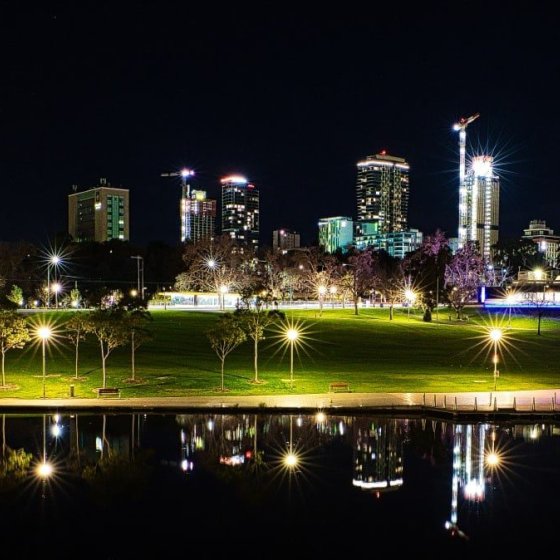- Home
- Environmental Themes
- Liveability
- Energy
Energy
Transitioning to Renewables
Energy production can produce emissions that impacts human health and results in environmental impacts. South Australia has been a leader in renewable energy generation, particularly wind and solar power. Renewable energy generation has helped reduce the state's reliance on fossil fuels and has contributed to a cleaner energy supply. South Australia being connected to the national electricity grid, allows for the import and export of electricity to and from neighbouring states. Interconnection provides flexibility in managing energy requirements and enables the sharing of renewable energy resources across regions.

South Australia is at the frontline of the global energy transition, having transformed its energy system from 1% to over 69% renewable energy in just over 20 years. Between June 2022 and June 2023, South Australia’s energy generation via renewables has been 72.3% compared to 36.3% nationally. By 2025–26, the Australian Energy Market Operator forecasts this could rise to approximately 85%. The target is to reach 100% net renewable energy by 2030.
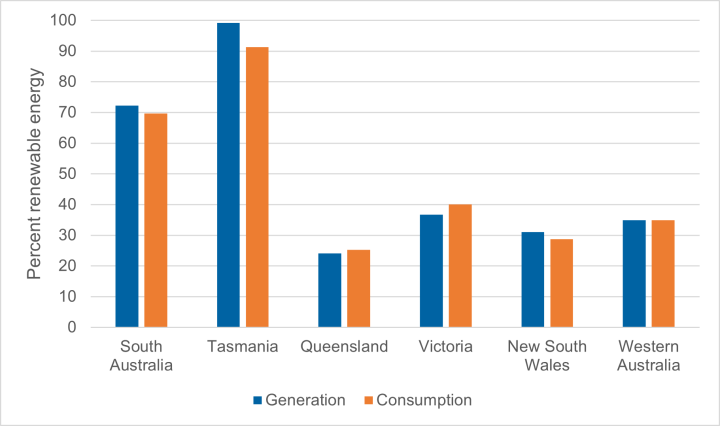
Wind is now the dominant source of renewable energy and contributed to 44.6% of South Australia’s total energy output and 64% of renewable energy output in 2021–22. South Australia has also made significant investments in large-scale solar power projects. Solar energy contributed to over 20% of electricity generated for South Australia in 2020–21. The aim is to reach 85% of energy generated via renewable energy sources by 2025–26. In 2021, 100% of South Australia’s energy demand was supplied by renewable energy sources for 180 days.
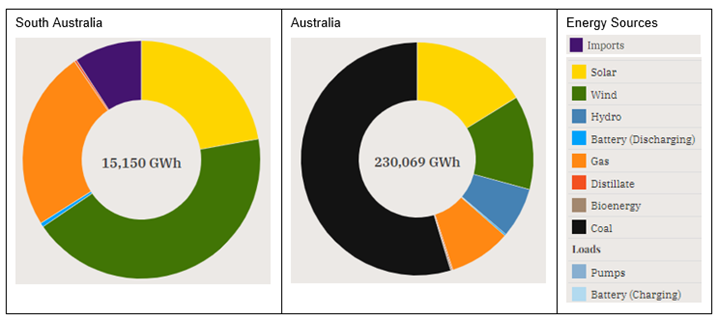
From a world perspective, South Australia is punching above its weight with respect to energy generation from renewable resources. In 2019, 11% of global primary energy came from renewable sources. Hydropower (60%) is the largest source of renewable energy worldwide compared with wind generation (44.6%) in South Australia.
Wind Farms
- Several wind farms in operation with a total installed capacity of just over 2,000 MW. Prior to 2003, only one 150 kW unit operated in Coober Pedy. Wind was our greatest source of energy generated in South Australia in 2021–22, accounting for 41% of the total energy generated. There have been concerns regarding noise from wind farms and, in response, the EPA has developed wind farm environmental noise guidelines. Development applications for wind farms are also referred to the EPA for advice to ensure they meet these guidelines. More recently, a sleep study was undertaken to identify impacts of wind farms on sleep. It was found that they were no more disruptive than road traffic and wind farm infrasound produced no evidence of sleep disruption.
Solar Power
- Significant investments in large-scale solar power projects with solar energy contributing to over 20% of electricity generated in the state in 2020–21. There has also been an increase in installation of solar panels in households. More than 1 in 3 South Australian households have solar systems installed and in 2020, 30% of all home batteries installed in Australia were located in South Australia. However, consideration needs to be given to the management of solar panels once they have reached the end of their life. It is anticipated that around 100,000 tonnes of panels are due to be dismantled in Australia from 2035.
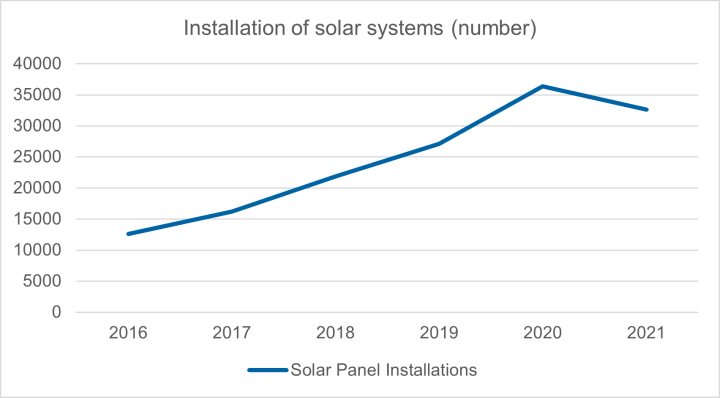
Battery Power
- The world's first biggest lithium-ion battery, known as the Hornsdale Power Reserve, which was built by Tesla in collaboration with the South Australian Government. The battery provides grid stability and helps store excess renewable energy for later use, reducing reliance on traditional fossil-fuel-based power plants during periods of high demand. A large battery has also recently been connected to the electricity grid at Torrens Island power station to support power generation by rooftop solar. Tailem Bend and Port Augusta are also home to 3 other solar parks, one being the Port Augusta Renewable Energy Park, which is a mix of solar and wind and has the capacity to power 180,000 households.
Hydrogen Power
- Investment in hydrogen energy. In 2019, the South Australian Government released South Australia’s Hydrogen Plan, which steps out 20 actions that will eventually lead to integrating hydrogen into our energy system. Hydrogen can be used like natural gas to heat and power homes, to power fuel cell electric cars and trucks, buses and trains, and to make electricity (through fuel cells or being burned to drive turbines).
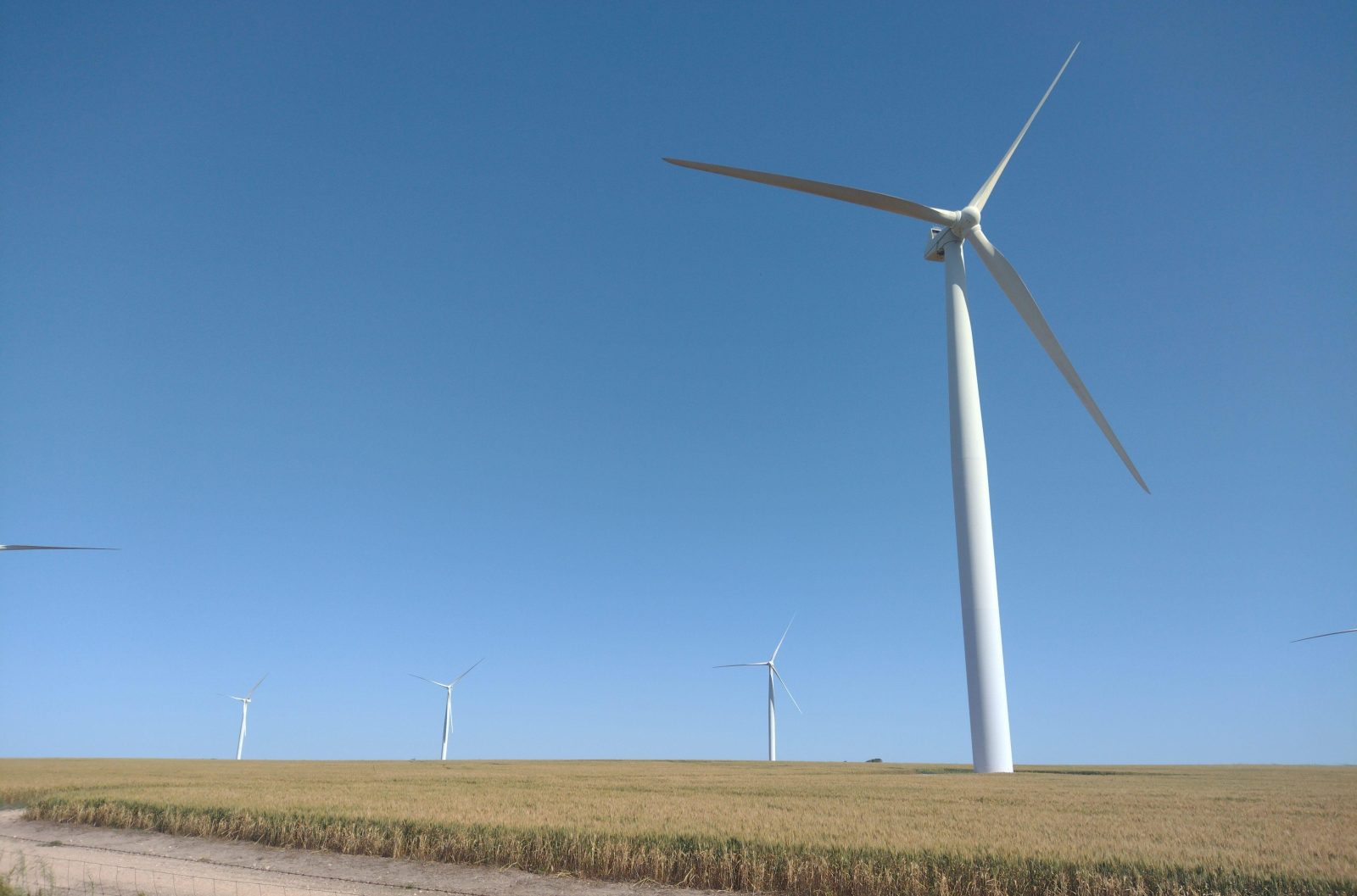
Check out
Considerations
Pressures
- Growing population with increasing demands for energy.
- Challenges associated with infrastructure for transmission and storage of electricity. South Australia’s electricity grid was originally designed for one-way supply and not for receiving energy back into the grid from renewable energy sources.
- Lack of social acceptance for some forms of renewable energy due to noise and/or amenity, for example, wind farms.
- Severe storms are likely to increase as a result of climate change, which may result in damage to infrastructure, for example, the storms that occurred on 12 November 2022 that resulted in major power outages and damage to power lines.
- Managing end-of-life infrastructure from renewable energy resources, for example, lithium-ion batteries, solar panels and turbines.
Impacts
- Energy supply from renewable sources can become unreliable because the present infrastructure cannot support a larger number of generators and the distributed nature of energy resources.
- Power interruptions and blackouts may be caused by storms, manual load shedding and manual generation shedding.
- Lack of acceptance of the construction of renewable energy infrastructure may prevent the expansion of renewable energy sources in some areas.
- Disposal of renewal energy infrastructure may result in environmental impacts, for example, site contamination and lithium-ion battery fires.
Responses
- The South Australian Government is undertaking a number of projects to improve the reliability and control of our electricity grid and power system security that take into consideration supply and generation of renewable energy.
- The Office of Hydrogen Power was developed in 2022 to facilitate the design and delivery of South Australia’s emerging hydrogen economy.
- Information is available to assist the community in designing new buildings or home renovations to be more energy efficient.
- Construction of the world’s first big battery took place at Hornsdale Power Reserve to provide essential grid-support services. This enables energy to be stored and provided to the grid when needed.
- Project Energy Connect is delivering an energy interconnector between the power grids of South Australia and New South Wales, with an added connection to Victoria.
Opportunities
- Introduce energy efficiency ratings for housing.
- Ensure that appropriate planning and community consultation is undertaken to facilitate sustainable development of renewable energy infrastructure.
- Develop recycling and safe disposal options for emerging waste streams from renewable energy infrastructure.
Further Reading
South Australian Electricity Report 2022 – Information on South Australia’s electricity supply and demand.
Australian Energy Market Operator – Information on energy supply, generation and consumption in Australia.
National Electricity Market generation map – Shows location of generation and transmission infrastructure across South Australia.
National Energy Account – Provides estimates of energy supply and use, including renewable energy use, end use, COVID-19 impacts and energy stocks.
Our Electricity Market – Information on South Australia’s electricity supply.
Leading the Green Economy – South Australia leading the way in renewables.
Australian Energy Update 2023 – Data on Australia’s energy consumption, production, generation and trade for 2022.
State of the Energy Market 2023 – Information on Australia’s wholesale electricity and gas markets, the transmission and distribution networks and energy retail markets.
Clean Energy Australia Reports – Annual reports by the Clean Energy Council that provide a snapshot of Australia’s clean energy sector including state summaries.
Energy Supply – Information about Australia’s energy system by the Department of Climate Change, Energy, the Environment and Water.
Office of Hydrogen Power South Australia – Information on the development of renewable hydrogen production in South Australia.
